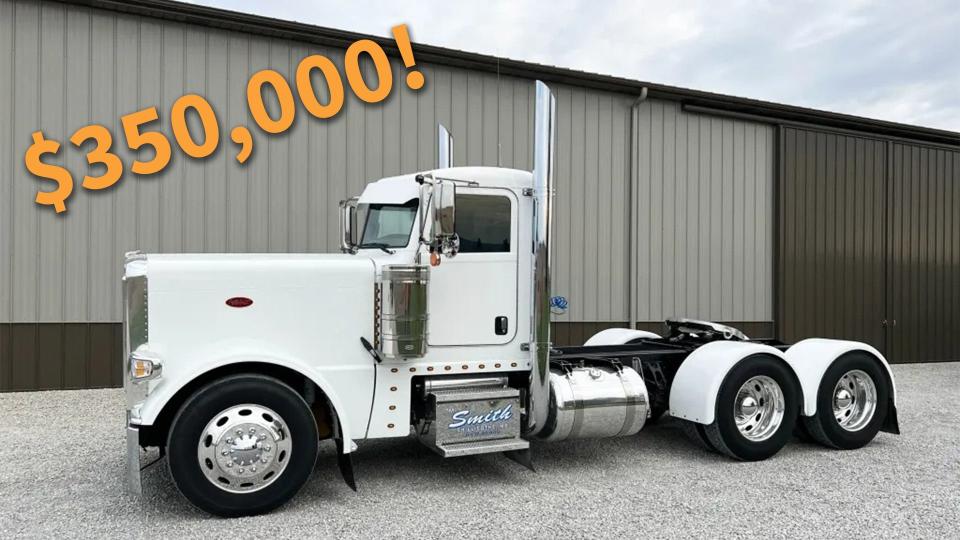Here’s Why This Used Peterbilt Semi-Truck Just Sold for $350,000 at Auction

The going price of semi-trucks probably isn't a concern for most folks, even if you consider yourself a car person. Indeed, if you aren't directly involved in the freight industry, that's something you don't really have to think about much. But it's my guess that you as well as many others reading this will be surprised to learn that a used 2017 Peterbilt 389 just sold at auction for $350,000.
It isn't every day that you see a tandem-axle tractor like this fetch more than a new Lamborghini Huracan or Ferrari F8. That's why I thought it'd be good to try and explain why it brought this much money, even if I can't exactly justify it. A rig's ultimately worth as much as someone will pay, and apparently, someone felt like this white Pete in Chillicothe, Missouri was worth a lot.
That's likely because it's fitted with a glider kit. If you aren't familiar with that term, here's what you need to know: Gliders are new trucks with remanufactured engines and transmissions. That sounds strange for obvious reasons, but pre-emissions powertrains offer big advantages for owner-operators. They're simpler, mechanically speaking, and repairs can often be made in-house a lot quicker—and for a lot less money. Not only that but they can also be tuned to make big power; for instance, this C15 Caterpillar 6NZ with an original manufacture date of 2003 is said to make 650 horsepower.




Production of these glider kits has all but come to a halt in recent years. The Environmental Protection Agency began changing regulations big time around 2017, back when this truck was assembled. Manufacturers were limited to 300 glider kits a year, a huge cut from the thousands that companies like Fitzgerald were pumping out annually beforehand. This is because, according to the EPA, gliders could emit 55 times more particulate matter than new trucks that meet the most current regulations.

 Yahoo Autos
Yahoo Autos 